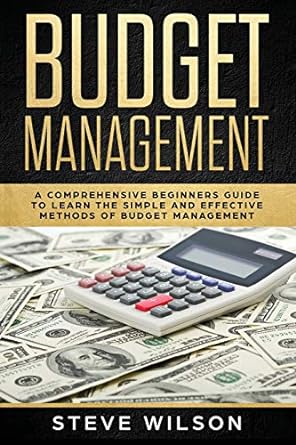Answered step by step
Verified Expert Solution
Question
1 Approved Answer
Begin by determing the formula to calculate the budgeted fixed manufacturing overhead rate per barrel, then compute the rate for each of the denominator-level capacity
Begin by determing the formula to calculate the budgeted fixed manufacturing overhead rate per barrel, then compute the rate for each of the denominator-level capacity concepts. (Abbreviations used: Budg. = budgeted, MOH = manufacturing overhead. Round the rates to the nearest cent.) Budgeted fixed Budg. fixed MOH per period Budg. denominator level (barrels) MOH rate per barrel Theoretical capacity 28,300,000 4,579,200 6.18 Practical capacity 28,300,000 + 3,520,000 = 8.04 Normal capacity utilization 28,300,000 2,780,800 10.18 Master-budget capacity for each half year: (a) January-June 2020 (b) July-December 2020 $ $ 14,150,000 14,150,000 1,091,200 = $ 12.97 1,689,600 = $ 8.37 Explain why they are different. The theoretical and practical capacity concepts emphasize supply factors, while normal capacity utilization and master-budget utilization concepts emphasize demand factors. The six-month rates for the master-budget utilization concept are different because of seasonal differences in budgeted production. Requirement 2. Compute the Chicago Brewery's operating income when the denominator-level capacity is (a) theoretical capacity, (b) practical capacity, and (c) normal capacity utilization. Begin by completing the following table to help you compute the operating income for each denominator-level capacity concept. (Round the rates to the nearest cent.) Budgeted fixed Denominator-level capacity concept MOH rate Per barrel Budgeted variable mfg Budgeted total mfg Fixed MOH per barrel cost rate cost rate costs allocated Theoretical capacity 6.18 $ 30.10 $ 36.28 $ 16,315,200 Practical capacity 8.04 30.10 38.14 21,225,600 Normal capacity utilization 10.18 30.10 40.28 26,875,200 Begin by completing the following table to help you compute the operating income for each denominator-level capacity concept. (Round the rates to the nearest cent.) Budgeted fixed Per barrel Budgeted Denominator-level MOH rate variable mfg Budgeted total mfg Fixed MOH capacity concept per barrel cost rate cost rate costs allocated Theoretical capacity $ 6.18 $ Practical capacity Normal capacity utilization 8.04 10.18 30.10 $ 30.10 30.10 38.14 40.28 36.28 $ 16,315,200 21,225,600 26,875,200 Now compute the operating income for each capacity concept, one at a time. Label the variances as favorable (F) or unfavorable (U). (Enter a "0" for any zero balance accounts.) Revenues Cost of goods sold Beginning inventory Variable manufacturing costs Fixed manufacturing overhead cost allocated Cost of goods available for sale Deduct ending inventory Adjustment for variances Cost of goods sold Gross margin Other costs Operating income Theoretical capacity Requirements 1. Compute the budgeted fixed manufacturing overhead rate per barrel for each of the denominator-level capacity concepts. Explain why they are different. 2. In 2020, the Chicago Brewery reported these production results: A 12 Beginning inventory in barrels, 1-1-2020 13 Production in barrels 14 Ending inventory in barrels, 12-31-2020 15 Actual variable manufacturing costs 16 Actual fixed manufacturing overhead costs B 0 2,640,000 180,000 $ 79,464,000 $ 26,900,000 There are no variable cost variances. Fixed manufacturing overhead cost variances are written off to cost of goods sold in the period in which they occur. Compute the Chicago Brewery's operating income when the denominator-level capacity is (a) theoretical capacity, (b) practical capacity, and (c) normal capacity utilization. Print Done - X bund Data table C Budgeted Fixed Manufacturing 1 Denominator-Level Capacity Concept Overhead per Period D Days of Hours of Production Production Barrels per per Period Hour E per Day 2 Theoretical capacity $ 28,300,000 360 24 530 3 Practical capacity $ 28,300,000 352 20 500 4 Normal capacity utilization $ 28,300,000 352 20 395 J). (E Master-budget capacity utilization for 5 each half year: 6 (a) January-June 2020 $ 14,150,000 176 20 310 7 (b) July-December 2020 $ 14,150,000 176 20 480 Print Done - X
Step by Step Solution
There are 3 Steps involved in it
Step: 1

Get Instant Access to Expert-Tailored Solutions
See step-by-step solutions with expert insights and AI powered tools for academic success
Step: 2

Step: 3

Ace Your Homework with AI
Get the answers you need in no time with our AI-driven, step-by-step assistance
Get Started


